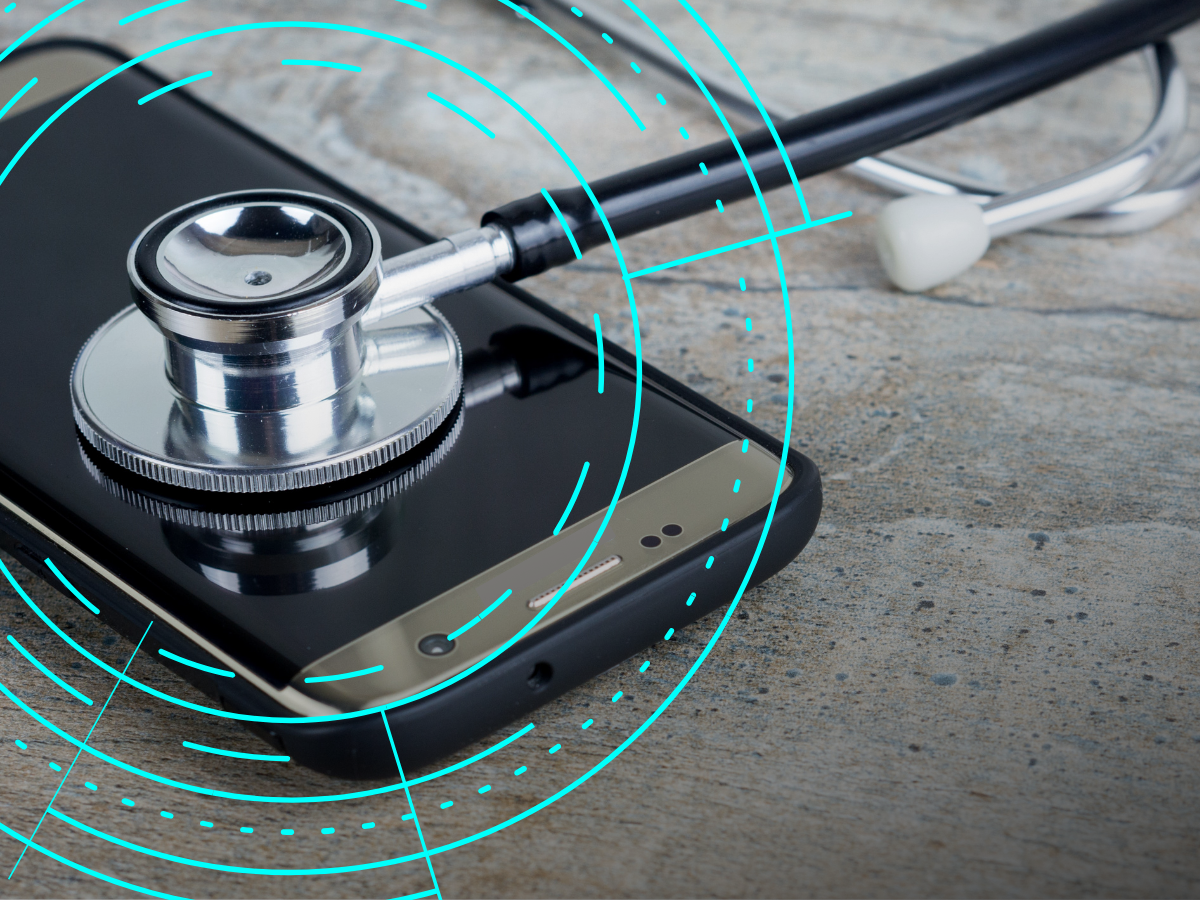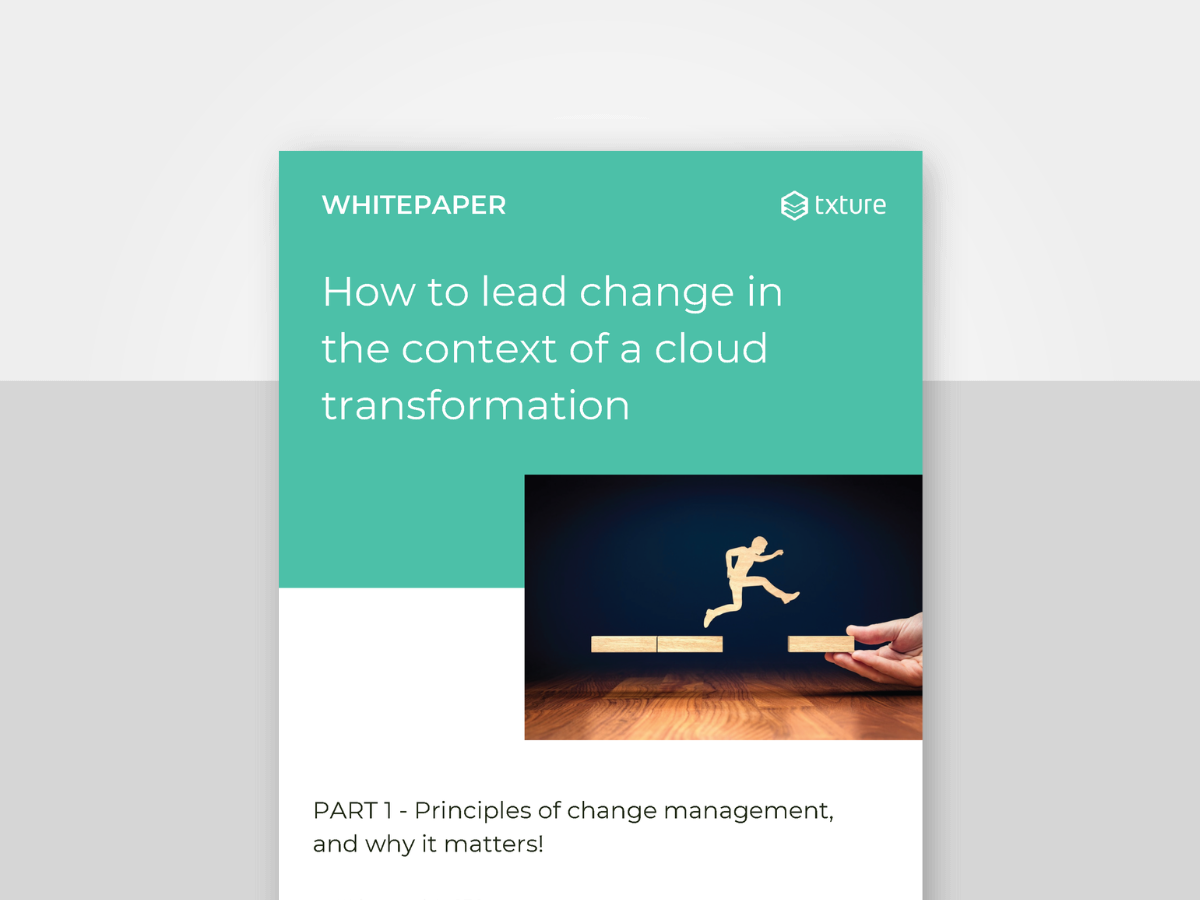Cloud Computing in the Healthcare Industry

All industries can benefit from cloud computing - that much is for sure. But where in its cloud journey is the healthcare sector at today and what are industry-specific advantages of this technology? In this article, we’ll explore the healthcare industry’s ongoing transformation through cloud computing. We’ll discuss concerns and outline six significant benefits and how to achieve them.
One thing is clear: the driving force behind healthcare's digital transformation is human-centric: we need to improve patient care and enhance working conditions for our medical staff. Let's start by exploring the status quo.
Cloud in the healthcare sector today
The healthcare sector isn’t opposed to the cloud’s low-hanging fruits 🍒🍋🍎. In the last years, a high percentage of healthcare institutions and providers already adopted SaaS (software-as-a-service) applications in their daily working routine.
 Already today, many SaaS applications get used by healthcare professionals on a daily basis.
Already today, many SaaS applications get used by healthcare professionals on a daily basis.
Some of the most commonly used cloud-based applications in healthcare include:
- Electronic Health Records Systems to store and manage patient health records electronically.
- Practice Management Software to assist healthcare facilities in managing appointments, billing, scheduling, and administrative tasks efficiently.
- Patient Engagement and Education to provide educational resources, appointment reminders, secure messaging between patients and healthcare providers.
- Medical Billing Management to streamline the billing process for private clients
- Healthcare Analytics and Business Intelligence to analyze large sets of data to derive insights, optimize operations, and make informed decisions.
- Project management, collaboration and email tools
But healthcare’s cloud transformation is far from done. The faxing of blood test results or sending MRI images on a DVD by post need to stop. Asap. What’s holding healthcare back?
 Still, many medical reports get printed or faxed beacuse healthcare institutions and medical practices have no means of accessing or collaboarting on shared digital patient health files.
Still, many medical reports get printed or faxed beacuse healthcare institutions and medical practices have no means of accessing or collaboarting on shared digital patient health files.
Cloud computing in healthcare: Advantages & Concerns
At Txture, we love cloud computing. But don’t get us wrong: a cloud migration is not all rainbows and candies ❌. There will be challenges, efforts, resistance, and uncomfortable shifts from the status quo. In this section, we’ll explore common concerns as well as key benefits healthcare institutions can tap into if using cloud computing.
Main concerns about “going cloud” in healthcare
While the healthcare system is not “new” to the cloud (as elaborated above), cloud computing is far from being the standard. A big reason are concerns regarding data security and confidentiality.
Data Security Worries in Healthcare Cloud Computing
Patients and healthcare providers alike worry about unauthorized access to sensitive medical data, fearing security lapses that could compromise confidentiality and privacy. The potential for cyber-attacks targeting healthcare systems and accessing critical patient records is a genuine worry. The constantly changing cybersecurity landscape adds to this anxiety, emphasizing the need for strong, adaptable security measures to maintain a secure environment for storing and accessing vital healthcare information. Later on, we’ll address which measures healthcare institutions can take to minimize this risk.
Other obstacles in healthcare cloud adoption
A study by Flying Health in collaboration with Atos and VMware examined the current situation and the significance of the cloud for healthcare. As key challenge, they highlight the underdevelopped framework for “functional intersectoral care”, referring to inadequate infrastructure, systems, and interfaces for communication and collaboration among diverse sectors within the healthcare industry, like hospitals, primary or specialist care, clinics, healthcare IT providers etc.
Findings from the study include:
- 84 percent of the respondents cited “lack of communication between stakeholders” as a hurdle.
- 77 percent consider the financial incentives to be inadequate.
- 36 percent mentioned “insufficient technical expertise” as an obstacle.
It is necessary to acknowledge that cloud transformations don’t necessarily result in a better, more cost-efficient setup. They need to be carefully planned, with proper IT estate assessments and rearchiteting big infrastructure parts. Most organizations rely on both consulting companies and software tools to support them in their cloud journey. If you don’t know how to approach your company’s transformation or need some addtional expertise, feel free to drop our transformation experts a message.
 Patient data security needs to be the number one priority for healthcare providers. If done right, cloud computing complies and exceeds on-premises security standards.
Patient data security needs to be the number one priority for healthcare providers. If done right, cloud computing complies and exceeds on-premises security standards.
6 Healthcare-Specific Cloud Benefits and How to Achieve Them
Much like other highly regulated sectors, e.g. the finance industry, healthcare has so far focused on leveraging the easy wins of cloud-based services. The upcoming cloud transformation of core systems (while requiring a lot more investments, in both time and money) offers an enhanced set of benefits to the caregiving sector.
1. Improved Data Security and Compliance
Yes, one of the key barriers to cloud adoption is also one of its main benefits. In correct setup and configuration, the cloud offers a massive security improvement. Personal health data is among the most private information one can have. Therefore, the secure handling of such data is a top priority for institutions like clinics, medical practises or nursing homes. Cloud computing offers advanced security measures to safeguard sensitive patient data, ensuring compliance with regulatory requirements such as the Health Insurance Portability and Accountability Act (HIPAA) in the US or national regulations. Cloud service providers implement stringent security protocols, encryption, and regular audits to maintain a high level of data security.
➡️ How to achieve improved data security and compliance:
- Select a suitable cloud service provider - ideally with a proven track record in healthcare data management.
- Configure the cloud system carefully, implementing multi-factor authentication, regular security assessments, and holding employee trainings. If needed, get professional help.
Tailored CSP information on compliance with the US HIPAA regulations:
2. Efficient Patient Data Management and Accessibility
Every hospital visit or doctor's appointment generates more patient data. It needs to be administered, updated and accessed by other health care professionals furhter down the patient journey. Still today, patients often receive printed medical reports which they need to take home and then remember to bring to the next attending physician. Instead, centralized, cloud-based systems allow healthcare professionals to seamlessly access this patient data from various locations and devices. This accessibility allows for quicker decision-making and improves the efficiency of healthcare delivery.
➡️ How to manage and access patient data:
- Invest in a cloud solution with a user-friendly interface, real-time data updates, and integrations to existing healthcare systems.
- Train staff to effectively use the cloud platform to reduce internal hurdles and resistance to change.
 After initial training periods, medical staff benefits of always-available cloud services that streamline processes, reduce manual effort, and eliminate the need for paperwork.
After initial training periods, medical staff benefits of always-available cloud services that streamline processes, reduce manual effort, and eliminate the need for paperwork.
3. Cost-Efficiency and Scalability in Healthcare
Cloud computing eliminates the need for extensive physical servers and on-premises infrastructure (reduction of hardware & operational costs), and therefore also its maintenance, unburdening the local IT staff. Cloud-fueled scalability allows healthcare providers to adjust resources based on actual demand, optimizing costs without compromising on service quality. This flexibility is particularly valuable in the dynamic healthcare environment.
➡️ How to achieve cost-efficiency and scalability:
- Conduct a thorough cost-benefit analysis before selecting the cloud service’s pricing model most suitable for your organization’s demand types (stable, dynamic, spiking etc.).
- Tailor the cloud infrastructure to match the organization's specific needs and projected growth for maximal cost savings and scalability.
➡️ Tools like Txture’s Application Transformation Cockpit help organizations to understand their needs and find suitable cloud solutions for each application. Learn more about how Txture supports solution architecture in terms of pricing, right-sizing and carbon emission forecacsting.
Read more about cost-efficiency and cloud pricing models in this blog post: Scalability in cloud computing
4. Facilitated Collaborations and Telemedicine
Cloud computing simplfies collaboration among healthcare professionals by providing a centralized platform for sharing information and collaborating on patient care. Telemedicine, which became very popular in some parts of the world during COVID19, heavily relies on cloud technology to enable virtual consultations and remote patient monitoring.
➡️ How to fully utilize cloud technology for collaborations and telemedicine:
- Ensure seamless integration with electronic health records (EHR) systems and telehealth platforms.
- Conduct regular training sessions on the effective utilization of these collaborative tools for healthcare professionals.
Change is never easy - and the dawn of telemedicine represents a significant shift from the traditional face-to-face medical engagements. Download our whitepaper to learn more change management in cloud transformations, best practices:

Whitepaper: How to lead change in the context of a cloud transformation
5. Enhanced Disaster Recovery and Business Continuity
During times of natural catastrophes and disastrous events, a resilient healthcare system is crucial for our society. Cloud computing provides robust disaster recovery solutions, enabling healthcare organizations to swiftly recover data and resume operations following a disaster or system failure. Utilizing cloud-based backups and redundant data centers significantly minimizes the risks associated with data loss and downtime.
➡️ How to enhance disaster recovery:
- Work closely with your cloud service provider(s) to design a comprehensive disaster recovery plan.
- Regularly test and update the disaster recovery strategy to ensure its effectiveness during critical situations.
6. Advanced Analytics and Insights
Cloud-based analytics platforms provide healthcare organizations with powerful tools to analyze vast amounts of medical data, extract valuable insights, and improve patient outcomes. Predictive analytics, machine learning, and artificial intelligence (AI) algorithms offer data-driven decision-making capabilities.
➡️ How to leverage advanced analytics and insights:
- Invest in a cloud solution that integrates weisting data sources. Make sure it offers strong analytical capabilities.
- Training your staff to interpret and properly utilize the insights generated by these platforms.
In short: Cloud computing for the healthcare industry
In summary, despite lingering privacy concerns expressed by some regarding sharing sensitive data with external parties like CSP, the advantages of cloud technology are driving its increasing adoption in the healthcare industry. The shift towards cloud-based systems iresults in:
- lower operational costs,
- quicker analysis of key care components like clinical notes,
- smoother, digital work environment for medical and caregiving staff,
- and ultimately, improved patient care.
Cloud adoption eliminates the vulnerabilities associated with on-site servers during disasters or hacker attacks, offering automated scalability. Additionally, easy access to patient data from various sources simplifies healthcare operations and improves the staff’s day to day working routines. The integration of cloud computing in healthcare holds significant potential to enhance telehealth, accessibility and planning for both patients and providers, resource efficiency, data privacy, and medical record standardization.
Ready to kick off your organization's cloud transformation?
Learn what our cloud transformation planning software offers in this 5-min demo video or directly get in touch with our sales team. We’re happy to explore in which way we can support your cloud migration efforts 👇
Related posts
29.4.2025Application ModernizationDefine your scope for IT modernization2.3.2025
Cloud StrategySelecting the right cloud data center for hosting your workloads27.6.2024
Cloud optimizationA great driver to maximize cloud value: moving to instances with modern processors 24.5.2024
Cloud Knowledge5 best practices to manage change during a cloud transformation5.4.2024
Generative AIHow to welcome Generative AI into your existing tech ecosystem
